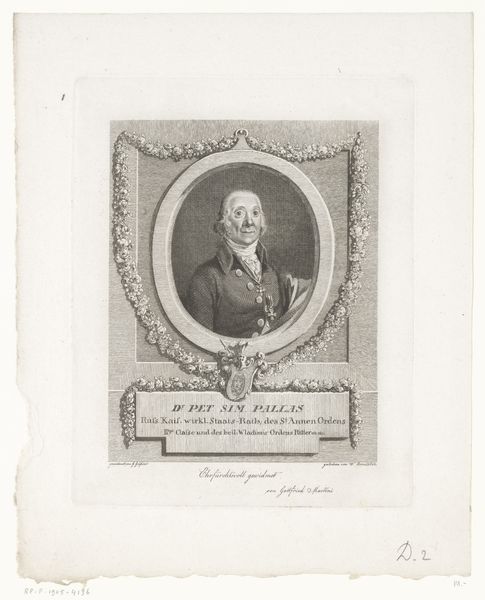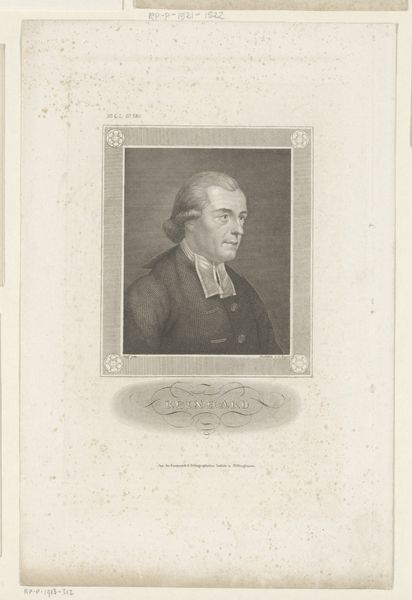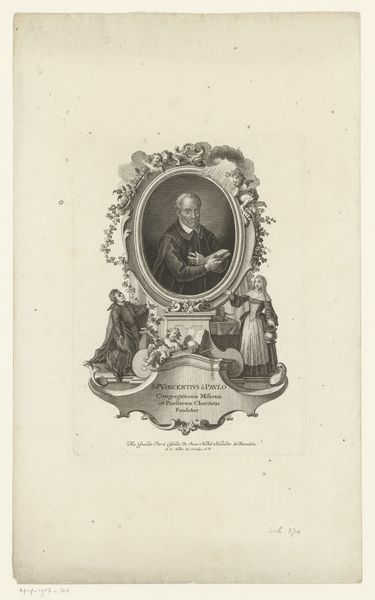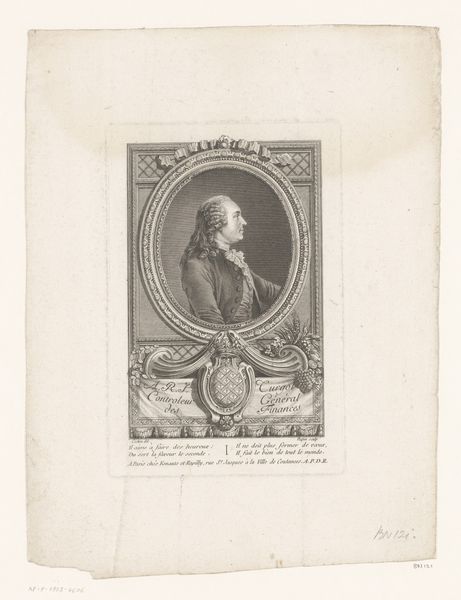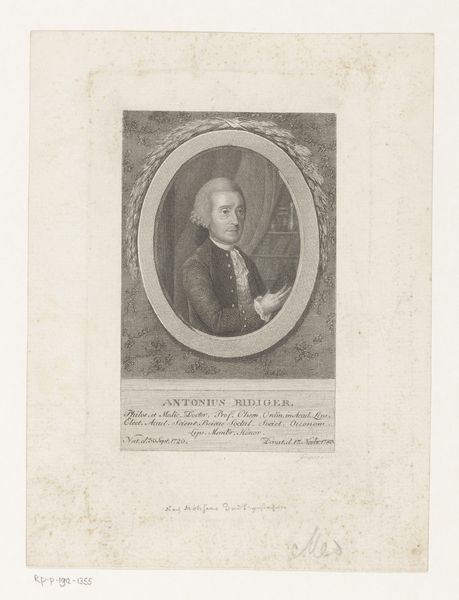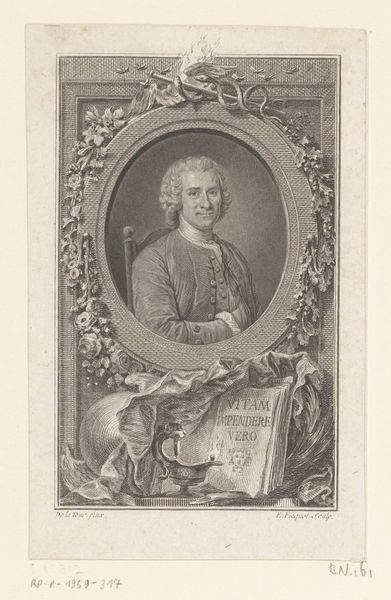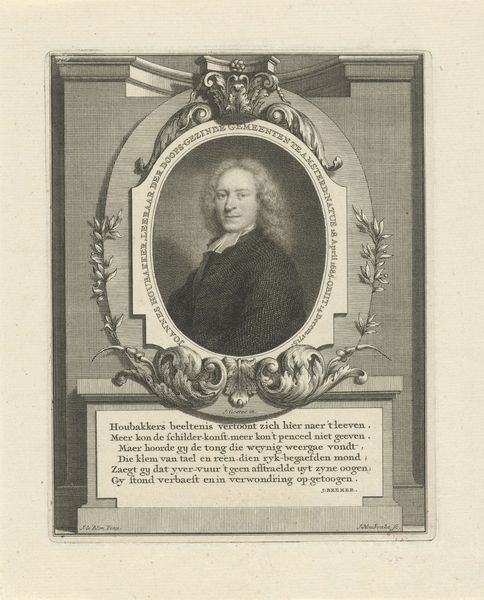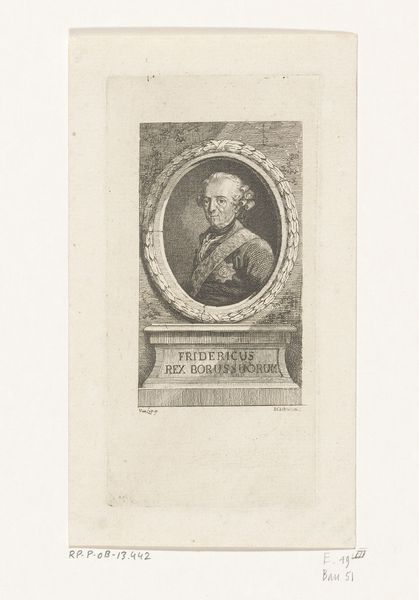
Dimensions: height 157 mm, width 108 mm
Copyright: Rijks Museum: Open Domain
This portrait of Gerlach Adolph von Münchhausen, created by Aegid Verhelst, presents us with a figure encircled by an oval frame, a classic symbol of status and timelessness in the 18th century. Below, we find a stone tablet adorned with roses and a cherubic figure, evoking classical motifs of love and remembrance. The roses, traditionally symbols of beauty and ephemeral existence, suggest a contemplative, melancholic tone, a reflection on mortality. This imagery is deeply interwoven with the cherub, a motif of innocent love and divine connection, often seen in funerary art, bridging the gap between earthly and divine realms. Consider how these elements echo through art history, from ancient Roman sarcophagi to Renaissance paintings. The cherub, for instance, evolves from pagan Cupid to a Christian symbol of divine love. This intermingling of symbols shows how collective memory and cultural inheritance shape the production and interpretation of art, engaging viewers on a subconscious level, stirring emotions tied to universal human experiences of love, loss, and legacy. The cyclical nature of these symbols reveals how our present is always intertwined with the past, resurfacing and evolving across different eras.
Comments
No comments
Be the first to comment and join the conversation on the ultimate creative platform.
